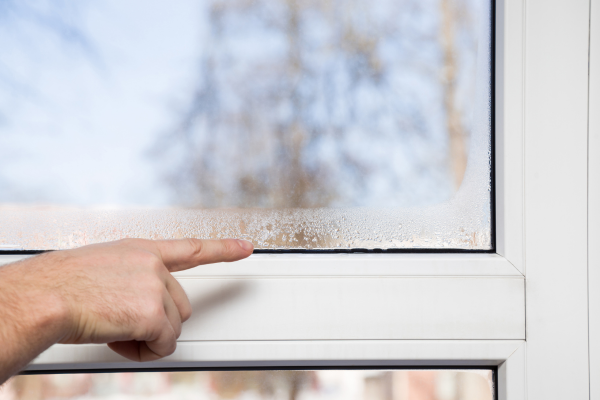Humidity isn’t always the first thing that comes to mind when people think about water damage. Most property owners notice the effects of a burst pipe or a roof leak far more than the slow creep of elevated indoor moisture. Yet humidity can initiate serious issues long before any visible signs appear. It seeps into your walls, lingers around your wooden floors, and hangs in the corners of poorly ventilated rooms. Over time, this quiet invader can trigger mold growth, warp building materials, and compromise the health of both homes and commercial properties. Understanding the role humidity plays and taking action to regulate it can prevent these challenges from ever taking root.
What Causes Humidity to Become a Problem Indoors
Indoor humidity often becomes an issue because of poor air circulation, inefficient HVAC systems, or excessive moisture coming from external factors like rain-soaked foundations and damp basements. In other cases, the problem may originate from inside your building—activities like cooking, showering, and drying clothes generate moisture that stays trapped without the right form of ventilation.
Regions with a naturally wet climate or frequent rainfall can exacerbate the situation. Houses built without proper vapor barriers or insulation are especially prone to moisture retention. Once levels go unchecked, condensation begins to form on cooler surfaces, including windows, walls, and ceilings. This sets the stage for long-term damage.
How Humidity Contributes to Water Damage
High levels of airborne moisture can quietly cause extensive structural deterioration. Unlike flooding or plumbing failures that are usually noticed immediately, humidity works slowly. This makes it difficult for some homeowners to connect it to the visible damage occurring around them.
Materials like drywall and wood absorb moisture from the surrounding air. Over days or weeks, this leads to warping, weakening of framing structures, even surface blistering or crumbling paint. Wood structures can expand, contract, and twist, weakening the stability of floors and walls. In commercial buildings, where large surface areas are exposed and air is recycled through large HVAC systems, humidity can impact flooring tiles, ceiling panels, and stored inventory.
Humidity becomes even more destructive when combined with heat. Warm environments further accelerate microbial activity, increasing the speed at which materials decay. If left untreated, these issues can result in extensive cleanup costs, code violations, and in some cases, full structural overhauls.
The Connection Between Humidity and Mold Growth
One of the most dangerous outcomes of unchecked humidity is mold. Spores are always present in the air, but they need moisture and the right temperature to grow. High humidity builds the perfect environment for fungal colonies to thrive on walls, ceilings, carpet, and furniture.
Mold doesn’t only feed on surfaces—it can embed itself deep into porous materials like drywall and insulation. Once mold is inside your walls or HVAC system, it continues to spread. For property owners, remediation often requires removing affected materials entirely. This isn’t just a financial concern. Mold contributes to health issues like breathing difficulties, allergies, and long-term respiratory illness, especially for children and older adults.
Structural Preservation Through Humidity Control
To prevent warped floors, rotting wood, and mold infestation, humidity control must become part of regular maintenance. Keeping the relative humidity of a building between 30 and 50 percent can preserve building materials and extend the life of your structure.
In wood frame construction, keeping moisture levels balanced helps floorboards maintain their shape and strength. For plaster, drywall, and tile, it prevents expansion, cracking, and separation from the frame. Over time, buildings that maintain even indoor moisture levels require fewer repairs, last longer, and avoid sudden expensive damage.
Effective Tools for Humidity Regulation
Modern climate control products make it easier than ever to maintain proper moisture levels inside your home or business. Dehumidifiers stand out as one of the most critical tools. They draw excessive moisture from indoor air, collecting condensation in a tank or draining it automatically. Whole-house dehumidifiers connected to HVAC systems offer constant moisture balance without manual operation.
Ventilation also plays a key role. Installing exhaust fans in rooms prone to higher humidity—such as bathrooms, kitchens, and laundry rooms—can drastically reduce airborne moisture. In multi-story buildings or structures with limited airflow, air exchangers refresh stale, humid air with drier air from outside or filter it through a humidity-reducing system before redistributing it inside.
Hygrometers help track humidity in real-time. These small devices are often overlooked, but they alert users to shifts before problems begin. In humid regions, using one in critical areas like basements or attics provides early warning signals.
Common High-Risk Areas in the Building
While humidity affects the entire structure, certain zones are more prone to water damage. Basements are at the top of the list due to their low elevation and limited airflow. They often have cooler surfaces, which promotes condensation when warm, moist air comes into contact with them.
Washrooms and kitchens face daily exposure to steam and water particles that rise into the air. Without working fans or open windows, that steam lingers, leading to soaked surfaces even without visible water leaks. In attics, poor insulation lets moisture from the main living space migrate upward. If not handled, this results in mold and degradation of the roof decking and insulation materials. Crawl spaces and under-floor areas collect ground moisture, further feeding the humidity level above them.
Tailoring Humidity Control to Different Climates
Humidity management isn’t one-size-fits-all. Property owners in coastal areas must account for salt-laden, damp air entering ventilation systems. In contrast, inland regions with seasonal rainfall need systems that adapt to dry months and manage big shifts in humidity during summer storms.
In warm, wet climates, dehumidifiers often run year-round. HVAC systems should be supported by sealing gaps and cracks where humid outdoor air might enter. For cold, damp environments, managing indoor humidity through insulation, double-pane windows, and insulated entry points is critical to combat condensation that forms on cold surfaces.
Selecting products built with your regional weather in mind makes long-term humidity control more practical. Mold-resistant drywall, vapor barrier paints, and foundation sealing kits all help reduce the risks connected to humid interiors.
Benefits Beyond Damage Prevention
Humidity regulation doesn’t just protect your walls and floors. It improves indoor air quality, which affects how people feel and breathe. Reduced moisture lowers the count of allergens, dust mites, and bacteria in the air. This is especially beneficial in schools, hospitals, offices, and multi-unit residences.
Moisture-balanced air also improves energy efficiency. Air conditioning systems work better in dry environments because they don’t have to overcompensate for dampness. Appliances such as refrigerators and washing machines last longer without extra strain caused by internal condensation. Even paint and wallpaper perform better, resisting peel and fade when exposed to stable moisture conditions.
Routine Checks Can Catch Hidden Moisture
Regular inspections are a smart line of defense for humidity-related problems. Checking behind furniture, beneath sinks, and inside closets can reveal signs other areas miss. Look for subtle discoloration, musty smells, or peeling finishes. Installing a few humidity sensors in vulnerable areas also helps detect buildup early.
Professional inspections are worth considering every couple of years, especially for commercial buildings or older homes. These assessments catch problems existing tools may overlook. When combined with annual HVAC servicing and routine cleaning of vents and filters, the entire system works together to protect your building’s lifespan.
When Humidity Leads to Long-Term Water Damage
In cases where high humidity was ignored, water damage often sets in subtly but leaves costly consequences. Mold can infest behind tile or inside wall cavities, weakening both aesthetic and functional parts of a space. Ceiling tiles may sag, panels change shape, or floors become uneven.
Repairs might require stripping out entire rooms, replacing insulation, and even treating framing with antifungal applications. In commercial spaces, this process disrupts business operation, requires compliance with remediation laws, and forces many to replace equipment or reimburse clients.
Preventing this with good humidity control methods spares both money and distress. It’s always more practical to stop moisture from building than to reverse the invisible damage it creates over months or years.
Humidity may not draw the same attention as burst pipes or overflowing gutters, but it brings just as much damage when ignored. Keeping indoor levels stable preserves your building from the inside out. Structured ventilation, smart moisture-monitoring tools, and regular maintenance habits offer property owners a quiet but strong layer of protection. Whether you’re running a multi-unit property or maintaining your family home, controlling humidity contributes to longer lasting spaces and healthier environments.


